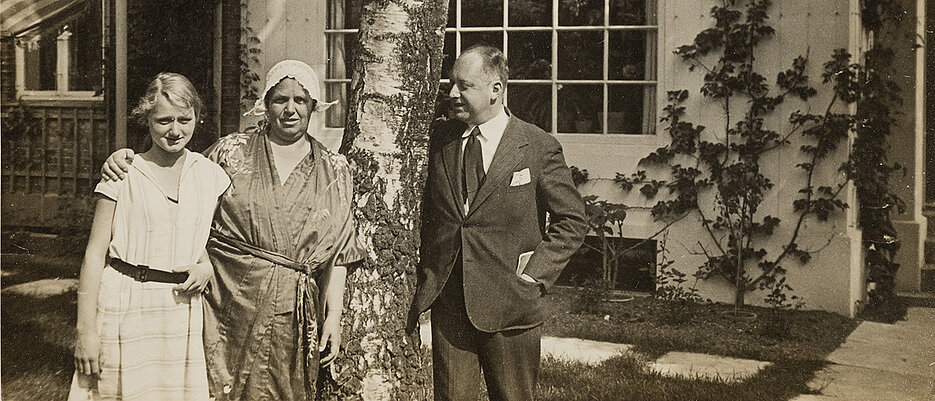The Würzburg literary scholars Professor Stephan Kraft and Dr. Holger Hof have already jointly published two of Gottfried Benn's correspondences. A third now presents Benn's correspondence with his daughter Nele.

The German poet Gottfried Benn was considered a loner, and one of the ways he compensated for his tendency towards self-segregation was through lengthy correspondence.
Stephan Kraft, Professor of Modern German Literary History at Julius-Maximilians-Universität Würzburg (JMU), researches and presents such correspondence. Together with Dr. Holger Hof, he has edited and annotated the two most recently published books: Gottfried Benn - Friedrich Wilhelm Oelze. Briefwechsel 1932-1956 (4 volumes, 2016) and Gottfried Benn - Gertrud Zenzes. Correspondence 1921-1956 (2021).
Now what is believed to be Benn's last major correspondence not yet edited has been published. The poet cultivated this correspondence with his daughter Nele. It was compiled as an annotated hybrid edition. The printed version was recently published in a co-operation between the publishers Klett-Cotta and Wallstein. A digital edition is currently being finalised in collaboration with the German Literature Archive in Marbach (DLA). The project was funded by the German Research Foundation (Deutsche Forschungsgemeinschaft - DFG).
A Special Exchange
Born in 1915, Nele grew up with Ellen and Christen Overgaard near the Danish capital Copenhagen from 1923 after the early death of her mother, the actress Edith Osterloh. The singer and the industrialist were childless themselves, and Benn had been romantically involved with the woman for a while.
"The so-called 'Nele letters' are undoubtedly the most important correspondence of Gottfried Benn's apart from the exchange with F.W. Oelze," explains Stephan Kraft. The interest in the correspondence goes far beyond the private biographical. "What is particularly remarkable is a very special variant of the 'Benn tone', in which intellectuality and intimacy appear to be linked," continues the literary scholar.
The Daughter as a Successful Journalist
The letters show a strong bond between Gottfried Benn and his daughter, who was living abroad. He particularly appreciated her intellectual abilities and described her as having a "fixity and intuition of mind that is unsettling".
In her memoir "Mein Vater Gottfried Benn" (My Father Gottfried Benn) from 1960, Nele asks herself: "How grateful must one be that a father writes letters?" The decision to send her to Denmark at a young age had been very painful for the child. As an adult, she decided that the physical separation from her father was unavoidable for artistic reasons.
And she appreciated the constant dialogue with him. After his death in 1956, she wrote to a friend: "I had very ambivalent feelings for my father for years, but his charm and wisdom always won me over, and in the last few years we were very close. A correspondence that lasted 32 years is now closed. The punctual letters from Dad have stopped coming. That's difficult."
Nele made an impressive career as a journalist in Denmark under her married names Topsøe and Sørensen, worked for various newspapers, was editor-in-chief of the largest Danish women's magazine and published several books.
More Material than Expected
A trip to Copenhagen at the beginning of the project yielded significantly more source material than the researchers had initially planned. "We wanted to get to know the heirs of the correspondence partners and find out whether there were any other relevant documents in private ownership," reports Stephan Kraft.
The material found complemented the letters, which are otherwise stored in the archive of the Akademie der Künste in Berlin and the German Literature Archive in Marbach. The 700-page book edition ultimately comprises around 250 surviving letters between Gottfried Benn and his daughter, supplemented by numerous letters and documents from the family circle between 1917 and 1956.
In addition to the carefully edited correspondence, the printed version contains a commentary, selected supplements, numerous illustrations and a detailed epilogue that traces the history of the eventful father-daughter relationship.






